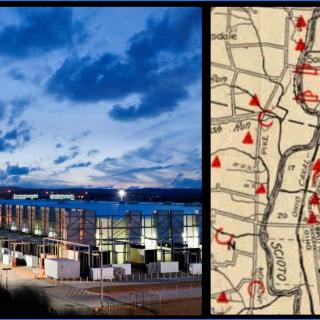Advertisement
To the relief of many Columbus residents, the Columbus Crew has been saved from relocation and will remain in the city. After efforts by fans and the city government to keep the Major League soccer team in town, the Columbus Crew has not only agreed to stay in Columbus, but also will soon have a new stadiumin the city’s downtown, set to open in 2021.
The ground-breaking ceremony for the new stadium took place on October 10, drawing in about 4,300 local fans. Many have expressed excitement for the new state-of-the-art facility, and the owners of the team say that they’re in it for the Crew to have the best of the league. In addition to the 20,000-seat stadium, the complex will include a bar/restaurant/event space and a plaza to host outdoor concerts.
Certainly, many see the new stadium as an exciting upcoming thing for the city. But at what cost, literally?
That’s when the situation becomes dicey. The soccer stadium is to cost a total of $232 million, “not including land acquisition and public infrastructure costs.” While original estimated costs for the stadium predicted that the city of Columbus would contribute about $50 million to building costs, new estimates place the costs to the city at about 98 million dollars. This does not include the additional 15 millionbeing contributed by the state of Ohio and an additional 45 millionpledged by Franklin County over a 30 year period.
While Columbus is not a small town, about one-hundred million dollars is not a small chunk of change, especially consideringthe city’s recent growth spurt. Unlike all other counties in the state, Franklin County is growing in size – in fact, 118 people moved to Columbus every day in 2018. Despite such growth, the city has a wide range of chronic (and, to say the least, eye-raising) problems it must deal with, many of which remain unsolved at least in part due to a supposed lack of funding.
Columbus, Ohio is the second most economically segregated cityin the United States and many of Ohio’s most common occupations simply do not pay living wages. In recent years, frustrations have also mounted as development in areas such as the Short North have led to textbook cases of gentrification, pricing out many of the area’s previous residentsin favor of an ugly slew of bars, restaurants and entertainment for the area’s wealthier residents.
While the issue of basic affordability is a huge problem for many locals, the city has also slacked in terms of keeping up with other needs. First, Columbus is the second largest metropolitan area in the United States without a light rail. Moreover, the city’s education system is in a state of crisis: the Columbus City School District closed on October 3rddue to the excessive heat – one-third of the school buildings lack air conditioning. While it’s true that there are plans in place to provide air conditioning to many, but not all, of the school buildings by 2021, the overall situation begs the question: how is the city able to justify projects such as the stadium when it cannot provide for the basic education or means of transportation of its residents?
There was, of course, no sort of democratic vote as to whether residents of the city wanted such an expensive stadium: this is the type of decision that is made by the city. Residents, however, have little say as to who is in charge: 30 out of the last 37Columbus City Council members have been appointed, not elected.
At the end of the day, the Columbus Crew is a privately-owned sports team. It is true that many enjoy the team’s presence in the city, but it’s not a necessity of any sort, at least not in the same way as education or transportation. Such recent decisions made to appeal to the company’s interests appear to come before the basic needs of many of the city’s residents, many of whom are struggling to keep up with the ever-climbing costs to call the greater Columbus area home.



